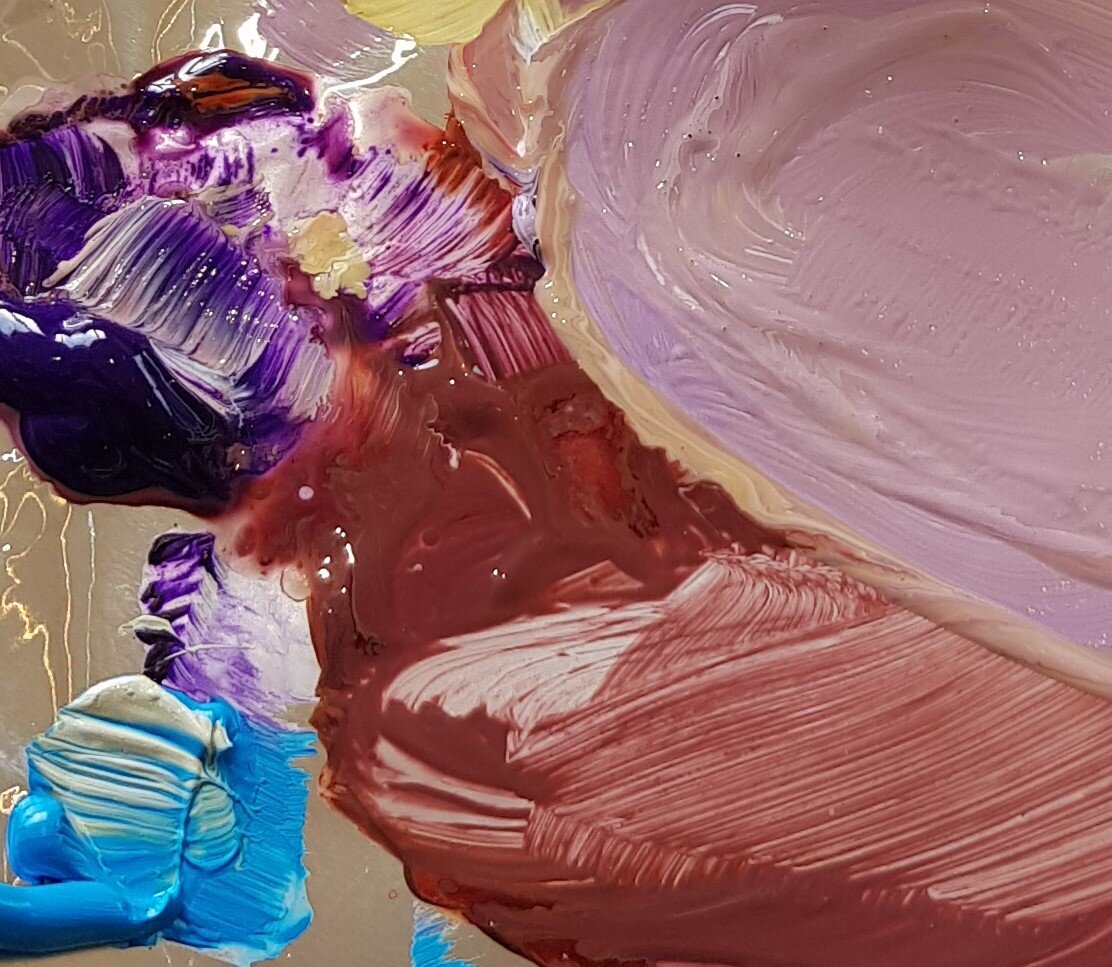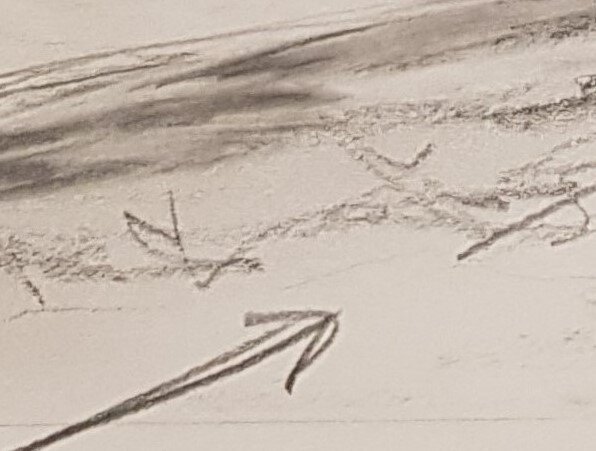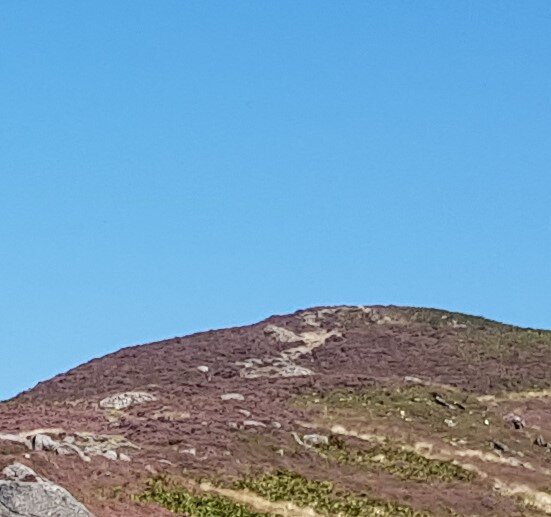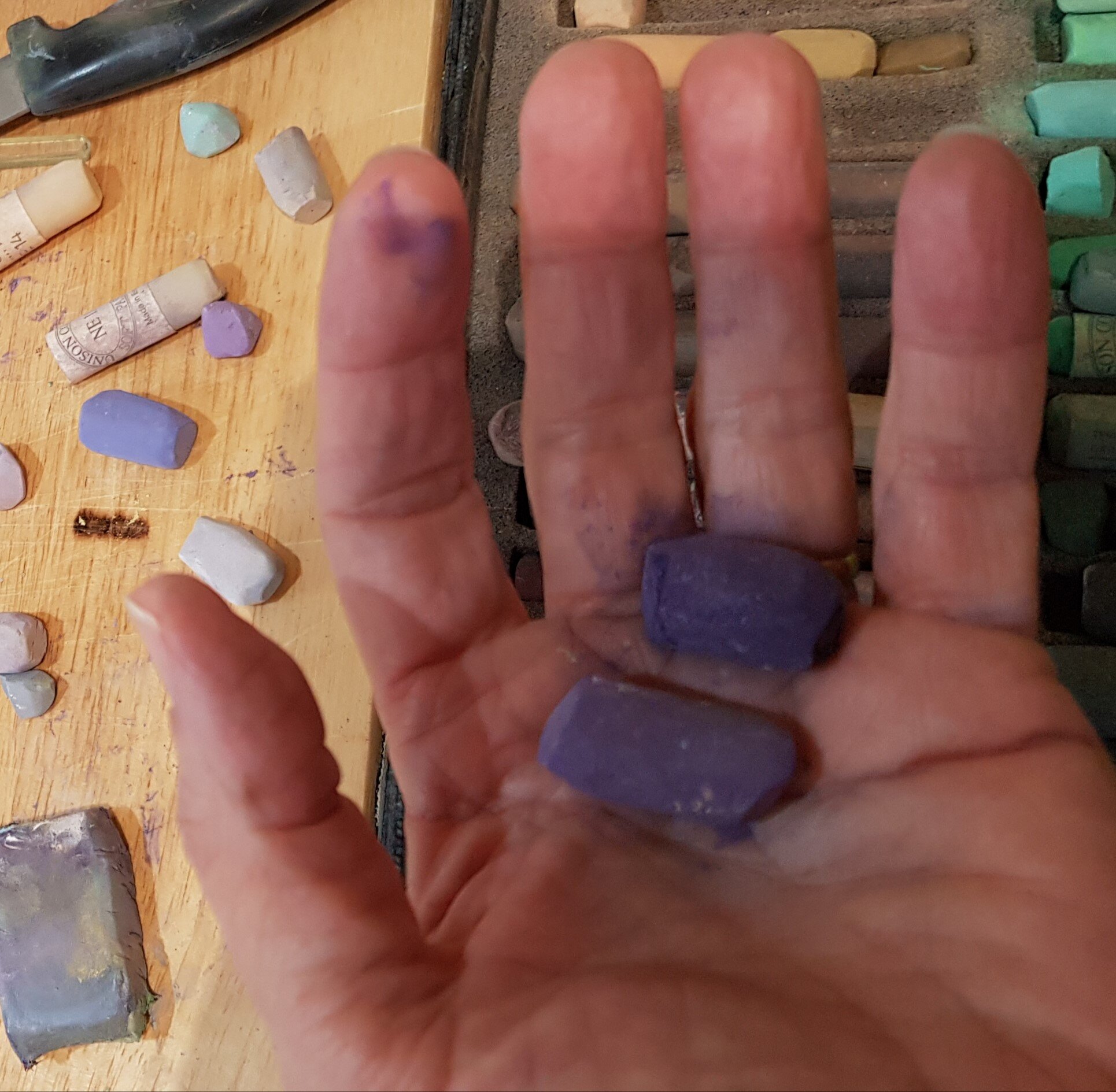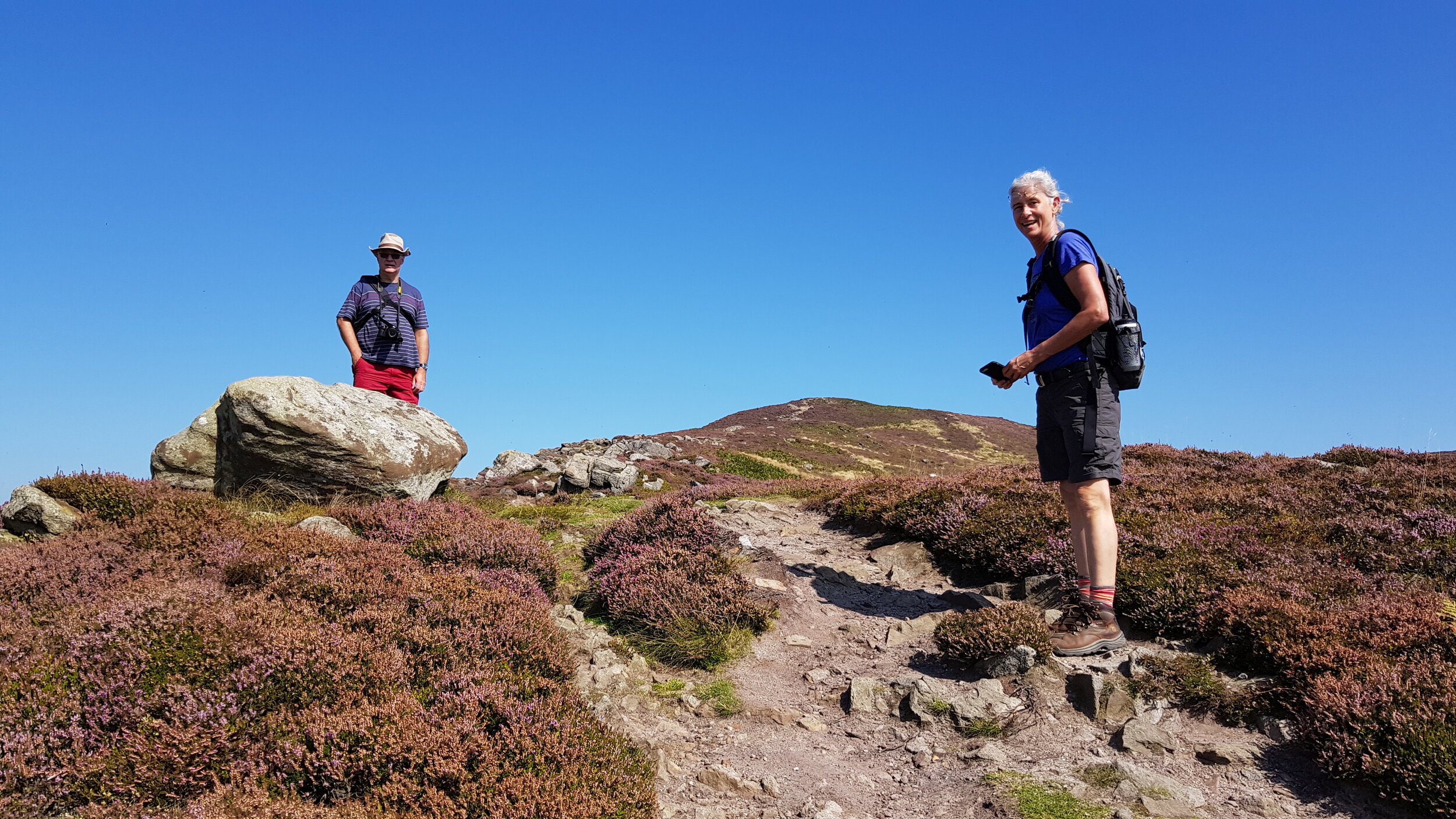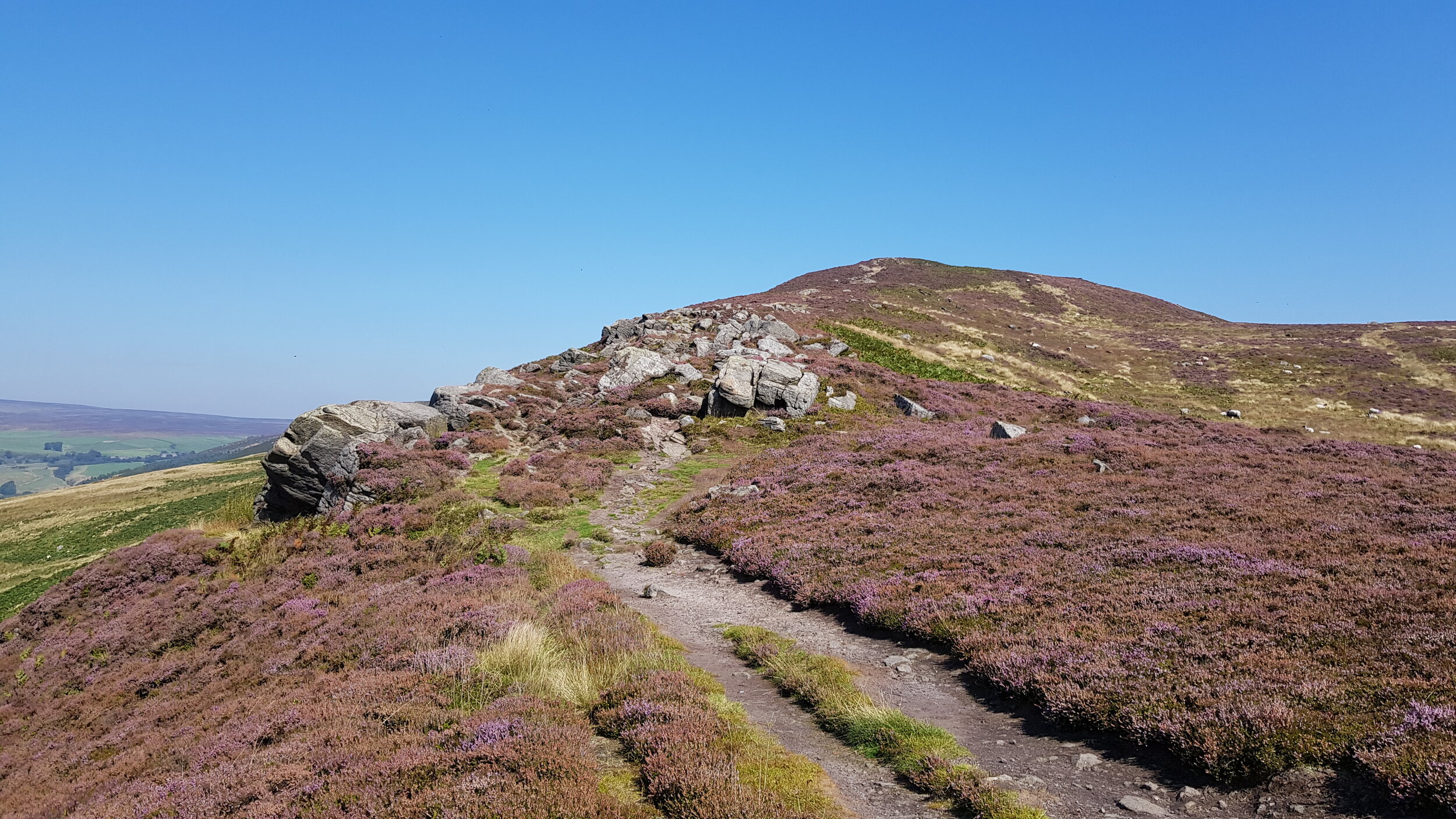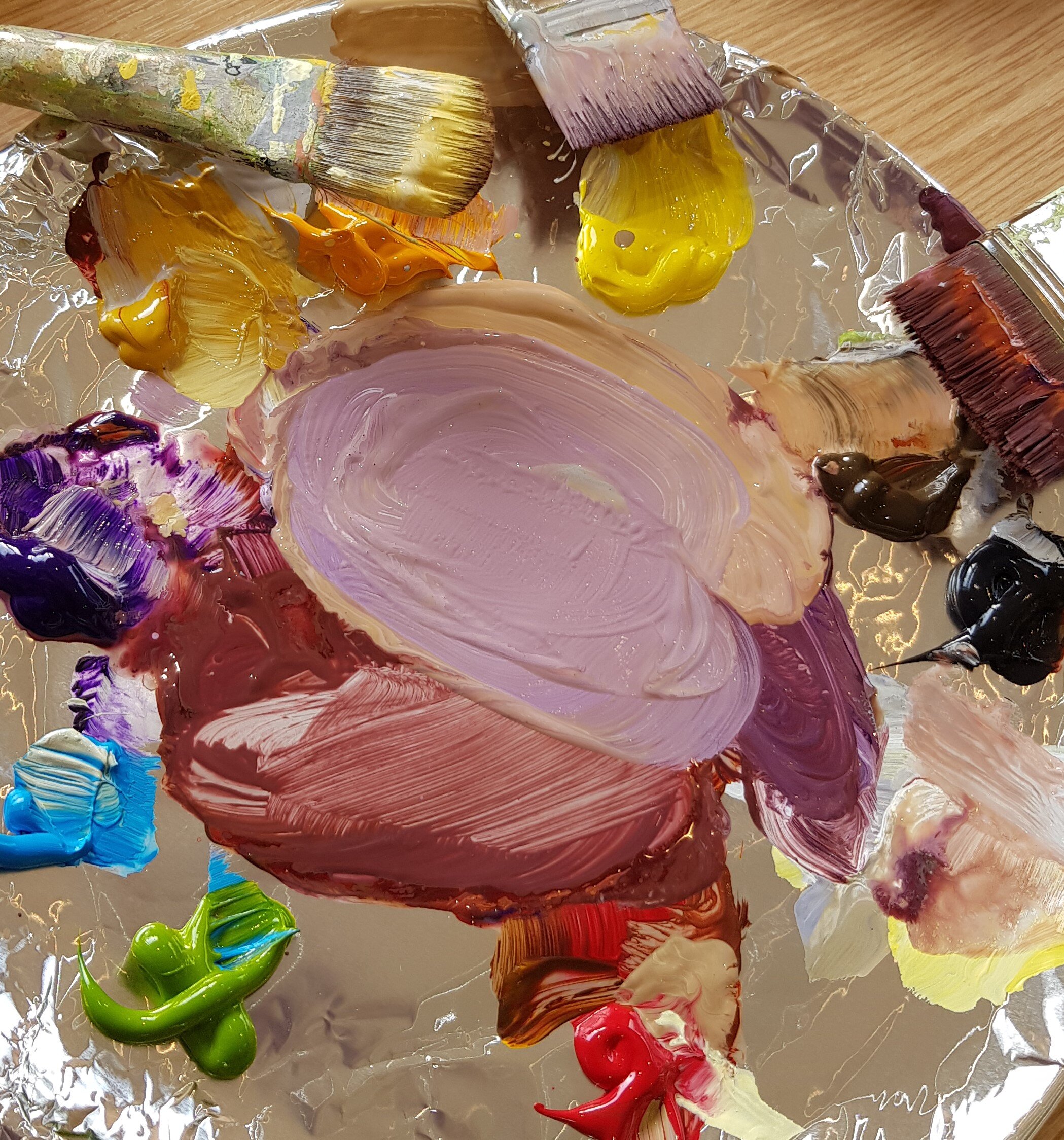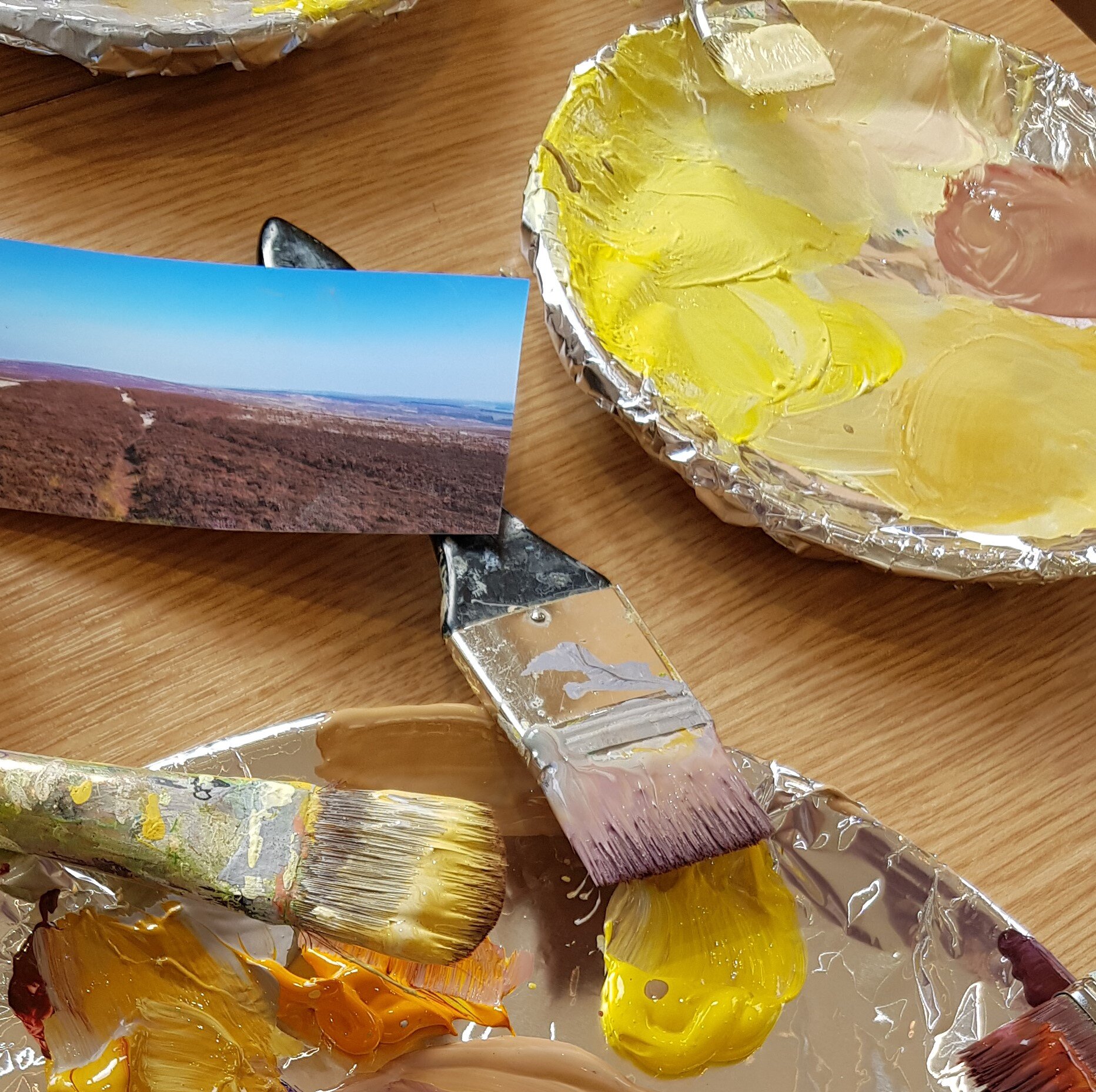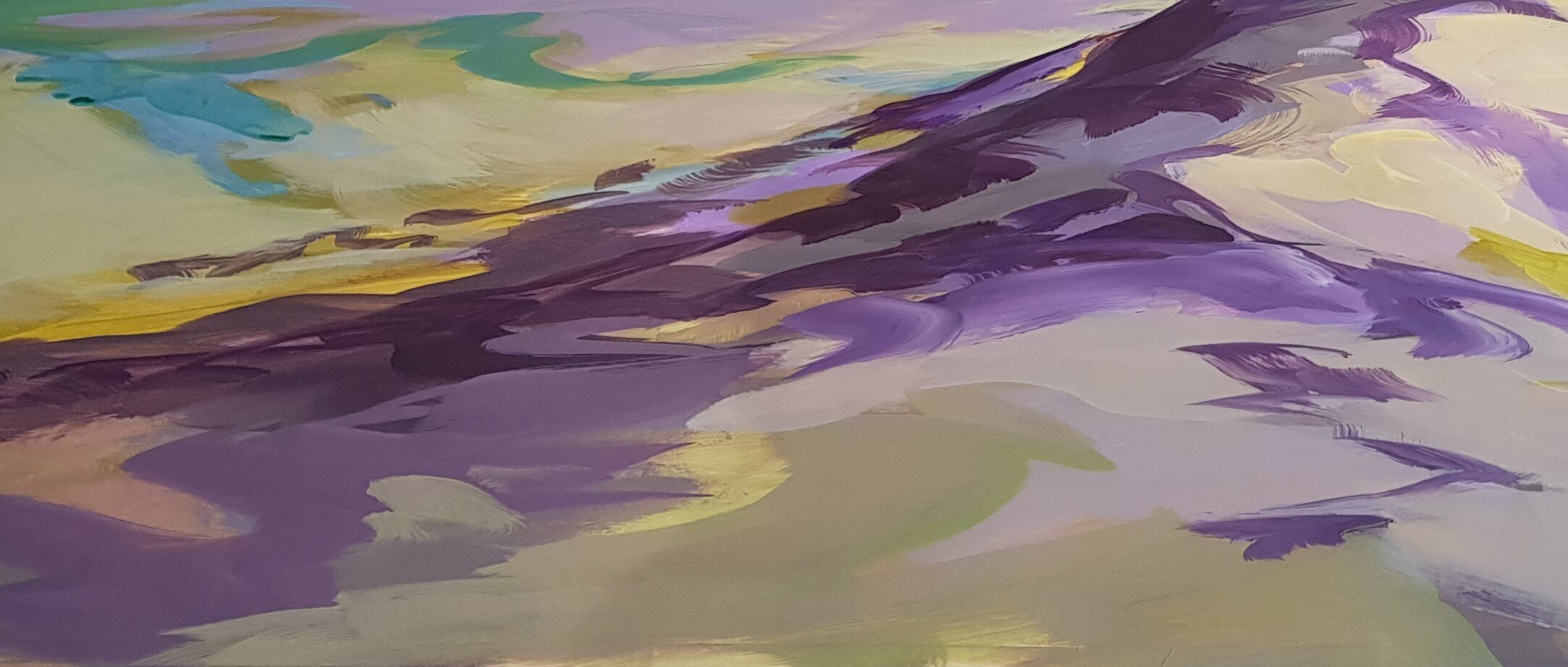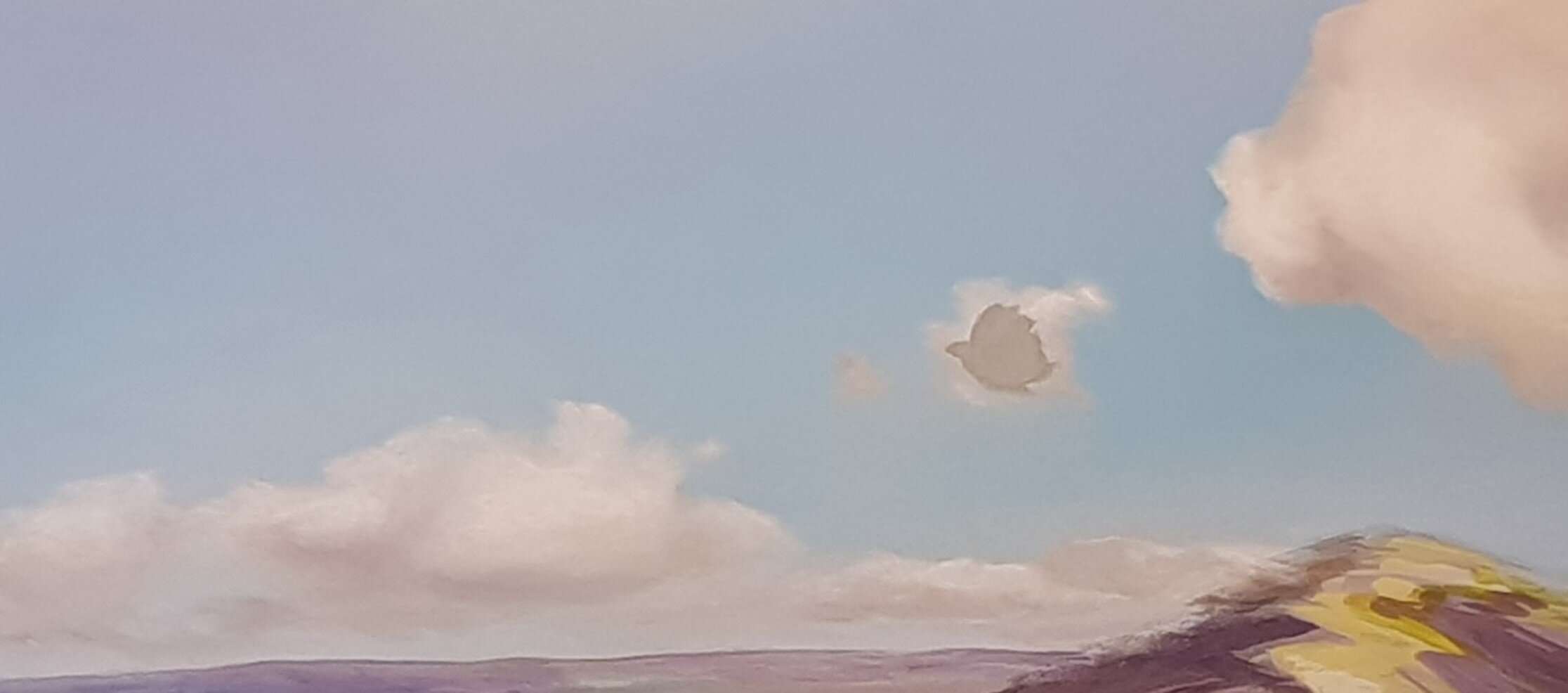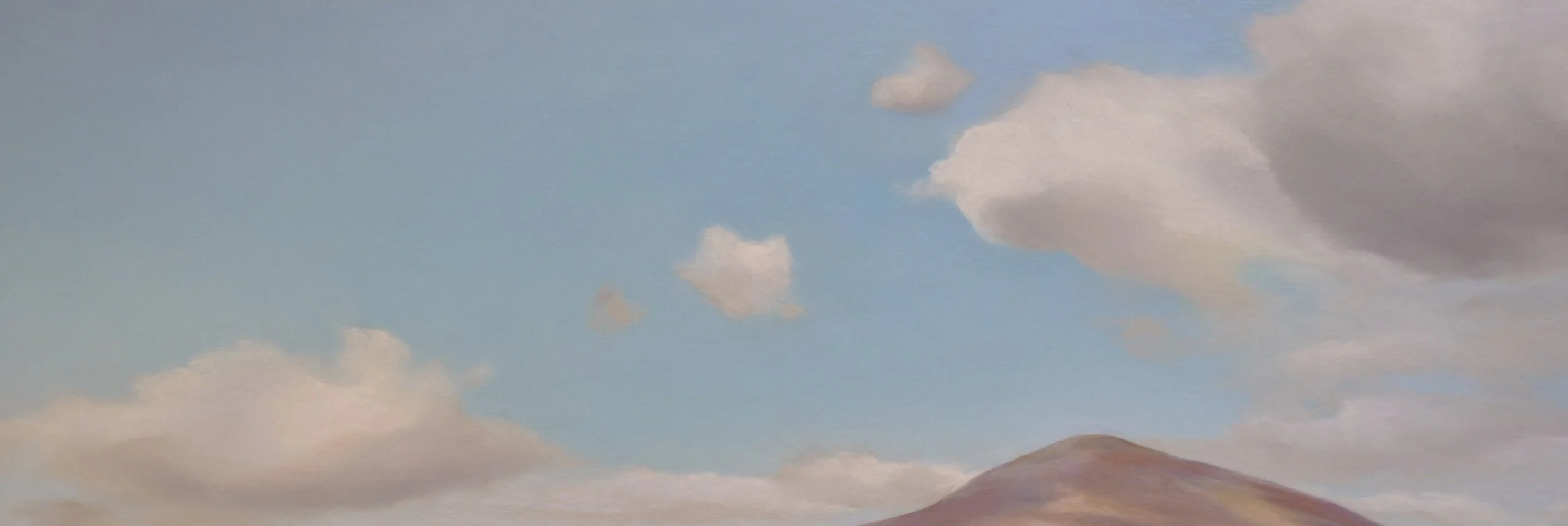ALCHEMY
There is always a special moment during the making of each painting where the idea, the composition, the size, the underpainting and the layering of pastel colours transform into something new.
If it’s going right, this is the moment that stops me in my tracks… the moment when I realise the painting WORKS. The moment that whatever it was that I’d intended – the uplift, the joy, the fleeting light or shadow, the heartbeat of the steep contour or exuberance of the lofty view – is coming to life on my easel, in 2D.
I don’t always achieve this at first attempt. And weirdly, it doesn’t always happen in a planned way, despite all my best efforts!
The life of a painting usually starts with an experience on a walk – sometimes just an exciting glimpse of something, or the feeling of the path and the sky - which gets translated into an idea, and then a composition.
Although my composition planning sets the size, the ratio, the content and the main horizons and shapes of the landscape, it also pins down something more important: the flow lines. These remind me of the ‘whoosh’ that I will aim for through the painting: its uplift and drama, its action.
Then there’s a lot of splashing around with underpainting (I use acrylic paint) and enjoy the freedom of big brushes…
Next the surface is made ready for pastels by applying a primer, which dries leaving a gritty surface, essential for holding those particles of pastel colour.
And then, only then, do the soft pastels start to be applied. Some gently layered, others bold and bright. Some blended to a beautiful hue; others crisply edged by applying heavier pressure with a sharp-edged stick of colour.
Moulded, applied, pulled back, re-applied. A process of looking, re-looking and re-looking again. The moment when it all begins to work together can be frustratingly illusive! And I have realised lately that the issue is not just about finding solutions; the most tricky bit is recognising where and what the problem is - only then will the right solution come along.
I take time, allow the painting to settle in my mind. I refresh, nudge, alter. When worked onto a good gritty surface soft pastels are so forgiving: I can take them off, add to them, re-layer.
And then finally I step back from my easel to look one more time and I realise…. It has happened again and I can sleep easy.
Is it the moorland walk, the idea, the flow lines, the paint, the colours, or the layering of soft pastel that creates the alchemy?
I don’t know. But I know it happens.
(Full painting to be revealed later this year).
